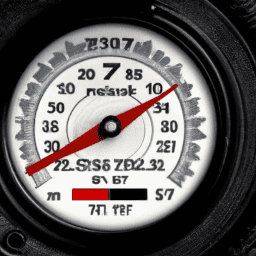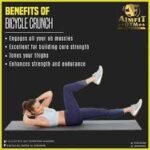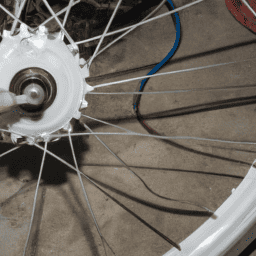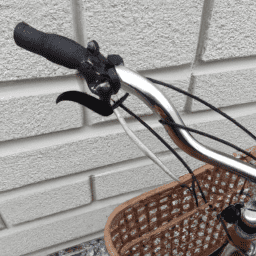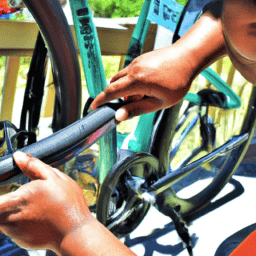Hello, are you familiar with the bicycle crunch exercise?
It’s a fantastic exercise that targets your abs, obliques, and hip flexors. Not only that, but it also improves your overall balance and stability.
In this article, I’m going to show you how to do the bicycle crunch correctly and give you some tips on how to avoid common mistakes.
Firstly, let me tell you why the bicycle crunch is so great. It’s a compound exercise, meaning it works multiple muscle groups at once, making it more efficient than single muscle exercises. It’s also a bodyweight exercise, so you can do it anywhere, anytime, without any equipment.
Plus, it’s a low-impact exercise, so it’s gentle on your joints. The bicycle crunch is a must-try exercise for anyone looking to strengthen their core and improve their overall fitness.
So, let’s get started!
Key Takeaways
- The bicycle crunch targets multiple muscle groups including abs, obliques, and hip flexors while improving balance and stability.
- Proper form includes keeping shoulder blades lifted, pointing elbows towards knees, and engaging core muscles while avoiding using momentum and straining neck.
- Modifications for different fitness levels can include basic crunches or adding resistance bands, weights, or stability balls for advanced workouts.
- To incorporate bicycle crunches, warm-up with basic exercises, alternate with other ab exercises, increase intensity, and add variety to prevent boredom and see results.
Benefits of the Bicycle Crunch
You’ll love how the bicycle crunch strengthens your core muscles and helps you achieve those rock-hard abs you’ve been dreaming of!
One of the main benefits of the bicycle crunch is that it improves core strength. This exercise targets the rectus abdominis, obliques, and transverse abdominis muscles, which are all essential for maintaining proper posture, stability, and balance. By strengthening these muscles, you’ll not only look great but also feel great as you move through your daily activities with ease.
In addition to improving core strength, the bicycle crunch is also an effective way to burn abdominal fat. As you perform this exercise, you engage multiple muscle groups, including your legs, arms, and shoulders, which increases your heart rate and burns calories.
Furthermore, the twisting motion involved in the bicycle crunch targets the oblique muscles, which are responsible for creating that coveted hourglass figure. So, get ready to sweat and watch your abs begin to take shape!
Now, let’s move on to the proper form for the bicycle crunch.
Proper Form for the Bicycle Crunch
To get the most out of this exercise, focus on keeping your shoulder blades lifted off the ground and your elbows pointing towards your knees. Correct breathing and engaging your core muscles are also key components to proper form. Inhale deeply as you begin the movement, and exhale as you twist your torso and bring your elbow towards your opposite knee. This will not only help you maintain proper alignment, but also ensure that you’re engaging your abdominal muscles effectively.
Maintaining proper alignment and avoiding strain is crucial to preventing injury and maximizing the effectiveness of the bicycle crunch. One way to ensure proper alignment is to keep your lower back pressed firmly against the ground throughout the exercise. Additionally, avoid pulling on your neck with your hands and keep your gaze towards the ceiling. By following these guidelines, you can perform the bicycle crunch with confidence and achieve the results you desire. Moving forward, it’s important to be aware of common mistakes to avoid and ways to modify the exercise for your fitness level.
Common Mistakes to Avoid
When doing the bicycle crunch, there are a few common mistakes to avoid.
One mistake is using momentum to swing your legs instead of engaging your core muscles.
Another mistake is not twisting enough, which can result in a less effective workout.
Lastly, straining your neck can lead to discomfort and even injury.
By being mindful of these common mistakes, I’ve been able to perform the bicycle crunch with proper form and achieve better results.
Using Momentum
As you build momentum with each bicycle crunch, it’s like pedaling up a hill and then coasting down the other side.
There are several benefits of using momentum during this exercise, including increasing the intensity of the workout and engaging more muscles in the core. Here are some tips for using momentum effectively:
- Start the movement slow and controlled, gradually building up speed as your muscles warm up.
- Use your breath to help propel you forward, exhaling as you crunch up and inhaling as you lower back down.
- Imagine that you’re trying to touch your elbow to the opposite knee, rather than just bringing your knee up to meet your elbow.
- Keep your neck and shoulders relaxed, focusing the movement in your abs and obliques.
- If you start to feel strain in your lower back, slow down and focus on proper form.
Using momentum can be a great way to make your bicycle crunches more challenging, but it’s important to not rely on it too heavily.
One common mistake is twisting too much during the movement, which can cause strain in the lower back.
Not Twisting Enough
Many people mistakenly twist too little during this exercise, which can limit the engagement of the obliques and result in a less effective workout. To avoid this mistake, it is important to focus on twisting your upper body as much as possible during the bicycle crunch. This will also improve flexibility in your spine and prevent injuries.
Here is a table to help you understand the correct technique for the bicycle crunch:
| Technique | How to do it |
|---|---|
| Twist | Twist your upper body and touch your left elbow to your right knee, then twist to touch your right elbow to your left knee |
| Extend legs | Extend your legs straight out and lift them off the ground |
| Breathe | Inhale as you twist, exhale as you switch sides |
By twisting more during the exercise, you will be able to engage your obliques more effectively and get a better workout. Additionally, improving flexibility in your spine will prevent injuries and make the exercise easier to perform. In the next section, we will discuss how to prevent straining your neck during the bicycle crunch.
Straining the Neck
While twisting enough is crucial for properly executing the bicycle crunch, there is also another common mistake that people often make: straining their neck. When doing the bicycle crunch, it’s important to keep your neck relaxed and avoid pulling on it.
Straining your neck not only causes discomfort, but it can also lead to injury. To prevent injury and ensure proper form, focus on engaging your abdominal muscles and keeping your neck relaxed.
You can also try placing your hands behind your head to support your neck or look straight up towards the ceiling instead of twisting your neck. If you still experience discomfort or strain in your neck, there are alternative exercises you can do to target your abs without putting pressure on your neck, such as leg raises or planks.
Now that we’ve covered how to avoid straining your neck during the bicycle crunch, let’s move on to modifications for different fitness levels.
Modifications for Different Fitness Levels
Let’s talk about modifications for different fitness levels when doing bicycle crunches.
As a beginner, it’s important to start slow and focus on proper form. Simple modifications, such as reducing the number of reps or placing your hands behind your head, can help you build up your core strength.
For more advanced modifications, you can add weights or try more challenging variations, such as the side-to-side bicycle crunch. And don’t forget about equipment variations, such as using an exercise ball or resistance bands, to mix things up and challenge your muscles in new ways.
Beginner Modifications
Surprisingly, even the most experienced fitness enthusiasts may benefit from the beginner modifications when attempting the bicycle crunch. These slow-paced and low-impact modified versions are perfect for beginners who are just starting their fitness journey or those who want to prevent injury.
Instead of trying to do the full bicycle crunch, beginners can start by doing the basic crunch with their feet on the ground and their hands behind their head. Once they have mastered this, they can gradually lift their legs off the ground and bring their opposite elbow to their knee, building up to the full bicycle motion.
Another alternative for beginners is to do the bicycle crunch while lying on their back with their knees bent and their feet flat on the floor. They can then lift their shoulder blades off the ground and bring their opposite elbow to their knee, alternating sides.
By starting with these modified versions, beginners can gradually build up their strength and endurance to eventually do the advanced versions of the bicycle crunch. Speaking of advanced modifications, let’s take a look at how to take the bicycle crunch to the next level.
Advanced Modifications
Ready to take your core workout to the next level? Try out these advanced modifications for the bicycle crunch.
Adding resistance bands is a great way to challenge your muscles and increase the difficulty of the exercise. Simply loop a resistance band around your feet and hold the ends with your hands as you perform the bicycle crunch. This will provide extra tension and resistance, forcing your abdominal muscles to work even harder.
Another advanced modification is to incorporate weighted bicycles. Hold a dumbbell or medicine ball at your chest as you perform the exercise, adding extra weight to your crunches. Be sure to choose a weight that is challenging but still allows you to maintain proper form and technique.
These modifications will help take your bicycle crunches to the next level, making them more challenging and effective for building core strength and stability.
Looking to switch up your routine even more? Check out the next section on equipment variations for more ways to add variety to your core workout.
Equipment Variations
To vary your core workout, you can incorporate different types of equipment, such as stability balls, resistance bands, and medicine balls. These variations can add an extra challenge to your bicycle crunches and engage different muscles in your core.
One equipment option is to use a stability ball. Place the ball under your lower back and perform the bicycle crunch while keeping your balance on the ball. This variation not only works your abs but also engages your back muscles for added stability.
Another option is to use a resistance band by attaching it to a stable object and holding onto the handles while performing the bicycle crunch. This variation adds resistance to your movement and can help tone your arms as well.
Lastly, using a medicine ball can add a weight-bearing element to your crunches. Hold the ball while performing the bicycle crunches, engaging your arms and shoulders while working your core.
Incorporating these variations can make your core workout more challenging and interesting. Now that you know some equipment variations, let’s discuss how to incorporate the bicycle crunch into your fitness routine.
Incorporating the Bicycle Crunch into Your Fitness Routine
If you’re looking to spice up your ab workout, try incorporating the bicycle crunch into your routine. Not only does this exercise target your entire core, but it also engages your obliques and hip flexors. Here are four ways to add the bicycle crunch to your fitness routine:
-
Start with a warm-up: Before diving into the bicycle crunch, warm up your core with some basic exercises like planks or crunches. This will prepare your muscles and help you get the most out of your workout.
-
Mix it up: Adding variety to your routine is key to preventing boredom and seeing results. Alternate the bicycle crunch with other ab exercises like Russian twists or leg raises.
-
Increase intensity: If you’re finding the regular bicycle crunch too easy, try adding weights or ankle weights to increase the resistance. You can also increase the number of reps or sets to challenge yourself.
-
Make it a circuit: Incorporate the bicycle crunch into a full-body circuit workout for a complete, intense routine. Combine it with other exercises like squats, lunges, or push-ups for a full-body burn.
By incorporating the bicycle crunch into your fitness routine and adding variety, alternative exercises, increasing intensity, and making it a circuit, you’ll see results in no time. Remember to always listen to your body and start with a warm-up before any workout.
Frequently Asked Questions
How many calories does the bicycle crunch burn?
Crunching and cycling, the bicycle crunch burns calories galore. My technique tips: engage your core, cycle your legs, and twist your torso to maximize the burn. Get ready to feel the heat!
Can the bicycle crunch help with back pain?
Yes, the bicycle crunch can help with back pain. In addition to strengthening the core muscles, incorporating yoga stretches and chiropractic adjustments can provide relief and prevent future pain.
How often should I do the bicycle crunch for best results?
I found doing the bicycle crunch 3-4 times a week to be effective in toning my abs. Varying the speed and adding weights challenged me. Remember to modify if you have back pain.
Is it safe to do the bicycle crunch during pregnancy?
As a pregnant woman, it is important to be cautious when it comes to ab exercises. While the bicycle crunch can be a great pregnancy workout, it is safest to consult with a healthcare provider and modify the exercise as needed to ensure it is a safe ab exercise for you and your baby.
Can the bicycle crunch help reduce belly fat?
Bicycle crunches are amazing for reducing belly fat! They’re one of the most effective exercises for toning your abs. The best time to do them is during your workout routine.
Conclusion
Incorporating bicycle crunches into your fitness routine is a great way to tone and strengthen your core muscles. By following the proper form and avoiding common mistakes, you can maximize the benefits of this exercise. Remember to engage your abs and keep your lower back flat on the ground. Be mindful of your breathing and keep a steady pace to avoid straining your neck or back.
Incorporating new exercises into your routine can be challenging, but the bicycle crunch is a great place to start. With modifications for different fitness levels, you can tailor this exercise to your needs. So why not give it a try? As they say, "no pain, no gain."But in this case, the pain will be worth it when you see the results in your toned and strengthened core.

